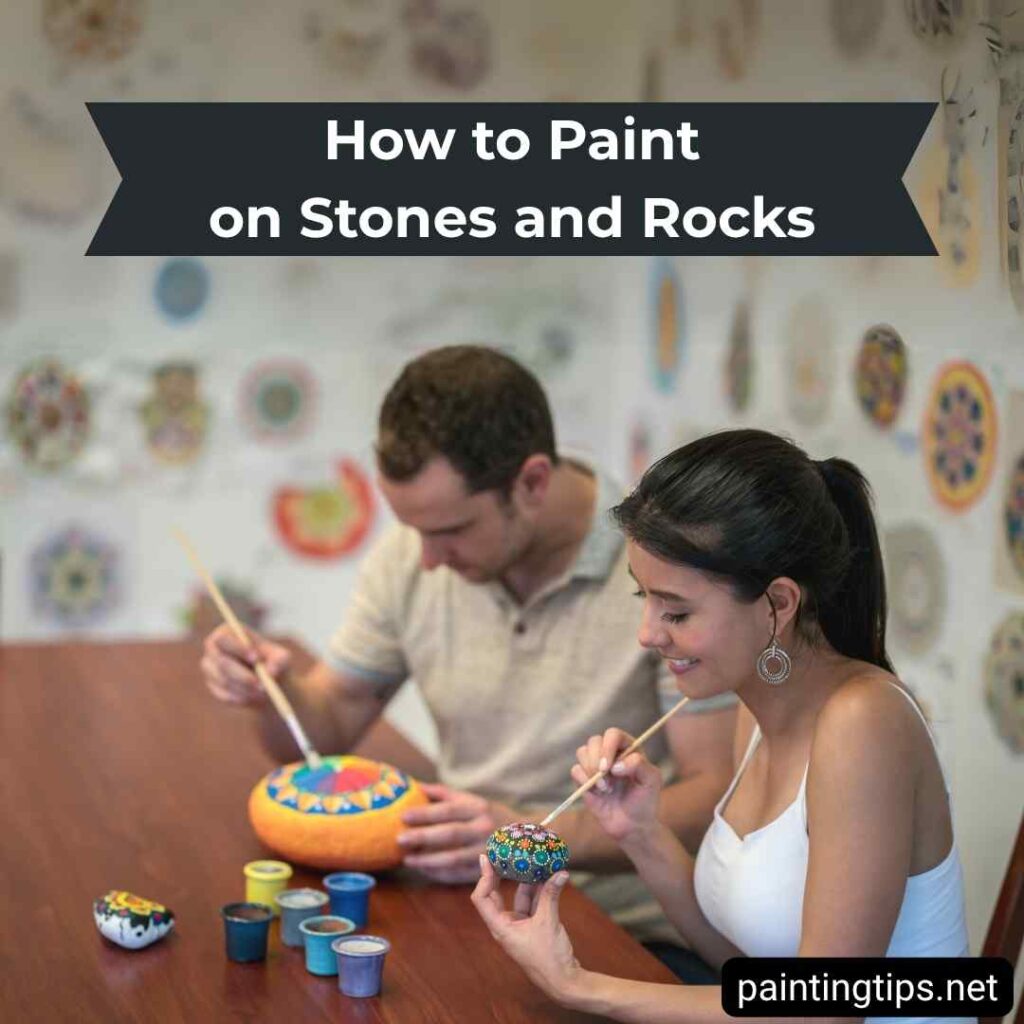Stone painting might bring to mind small, painted pebbles used as home décor or craft projects—but there’s so much more to it. Whether you’re decorating tiny stones for indoor display or giving a bold new look to large garden rocks, painting stones and rocks is a satisfying way to express creativity. It can brighten up your outdoor spaces, personalize garden paths, or even serve practical purposes like marking plants in your yard.
In this guide, you’ll learn how to paint stones and rocks step by step, which paints work best for different surfaces, and how to make sure your designs last—whether they’re inside your home or exposed to the elements. We’ll also explore essential preparation steps and common mistakes to avoid so your project turns out just right.
How to Paint on Stones and Rocks

Painting stones and rocks is simple, but proper preparation and technique make a big difference in the final result. The surface of most stones isn’t very absorbent, so paint alone may not stick well. That’s why cleaning, priming, and sealing are key parts of the process.
Start by washing your stone or rock thoroughly. Use a stiff-bristled brush and water to scrub away dirt, dust, and any debris lodged in the surface. Let the stone dry completely before moving on—any moisture left behind can interfere with paint adhesion.
Once clean and dry, apply a primer suitable for your paint type. For small indoor stones, a basic acrylic primer will work well. For larger rocks or any outdoor use, go with an exterior primer designed for non-porous surfaces. Allow the primer to dry for at least 4–5 hours before painting. The paint you choose depends on where and how you’ll use the stone.
What to Use to Paint Stones
You can use watercolor, oil-based paint, latex paint, acrylic paint, or exterior paint on stones. For small indoor stones, acrylic paint is usually the most popular choice because it’s easy to use, dries fast, and comes in many vibrant colors. Watercolor paints can also work well for a softer look. For larger stones or those used outdoors, latex or oil-based paints are more suitable due to their durability.
Step-by-Step Guide to Painting Stone
By following these steps carefully, you can paint stones and rocks flawlessly and make the finish last for years.
Step 1: Clean the Stones
Stones are not naturally absorbent, and they often hold dust and dirt in tiny pores. To ensure your paint sticks well, wash the stone or rock thoroughly with clean water and scrub it using a stiff brush, such as one used for washing cars. After cleaning, let the stone dry completely before painting.
Step 2: Prime the Surface
Priming helps the paint adhere and makes your colors pop. If you’re working with large outdoor stones, consider applying an exterior primer to help the paint adhere better and withstand the elements. For smaller craft stones, a regular acrylic or multi-surface primer works well. Apply one coat and let it dry for 4–5 hours.
Step 3: Choose the Right Paint
Here are your options based on surface size and location:
- Acrylic Paint: Great for both indoor and outdoor use. Multi-surface acrylics work best on stones.
- Spray Paint: Ideal for quickly covering larger stones with solid color. Not suitable for fine details.
- Oil-Based Paint (Enamel): Excellent for large, outdoor rocks. Durable and weather-resistant.
- Gouache: Suitable for small, indoor decorative stones. Not weatherproof.
- Watercolor: Can be used indoors, but is not durable. Use only for light decorative purposes.
- Paint Pens & Markers: Perfect for lettering or details. Try waterproof pens like Edding.
- Exterior Latex Paint: Best choice for outdoor boulders and garden stones. Long-lasting with proper sealing.
Step 4: Paint Your Design
Use a soft brush for base coats and switch to detail brushes for more intricate designs. For added precision, you can use stencils or fine-tip markers. Apply at least two coats of paint, allowing each layer to dry fully—typically about four hours between coats. Tip: For dark stones, apply a white base coat to help colors stand out.
Step 5: Seal the Stone
To make your artwork last, wait 24 hours after applying the final coat of paint, then apply a water-based acrylic varnish or clear spray sealer. This protective layer shields the paint from moisture, UV rays, and abrasion. If you’re painting garden markers or outdoor decorations, sealing is especially essential for long-lasting results.
Can You Paint Directly on Stone?
Yes, you can paint directly on stone. Simply ensure the stones are clean and dry before you begin painting. For better results, apply a primer coat first. It helps the paint adhere better and last longer, especially if the stone is porous or will be placed outside.
Conclusion
Painting stones and rocks is an easy, relaxing craft that allows for endless creativity. Whether you want to make indoor décor, garden accents, or personalized gifts, just remember the basics: clean, prime, paint, and seal.
You can use anything from acrylics and oil paints to markers and spray paint depending on the size and location of your stones. And if you’re working on large garden rocks or outdoor landscaping stones, using exterior paint and a good primer will help your colors last for years.
With the right prep and a little patience, you can transform even the plainest stone into a unique piece of art. Don’t be afraid to experiment—stone painting is just as much about the process as the result.